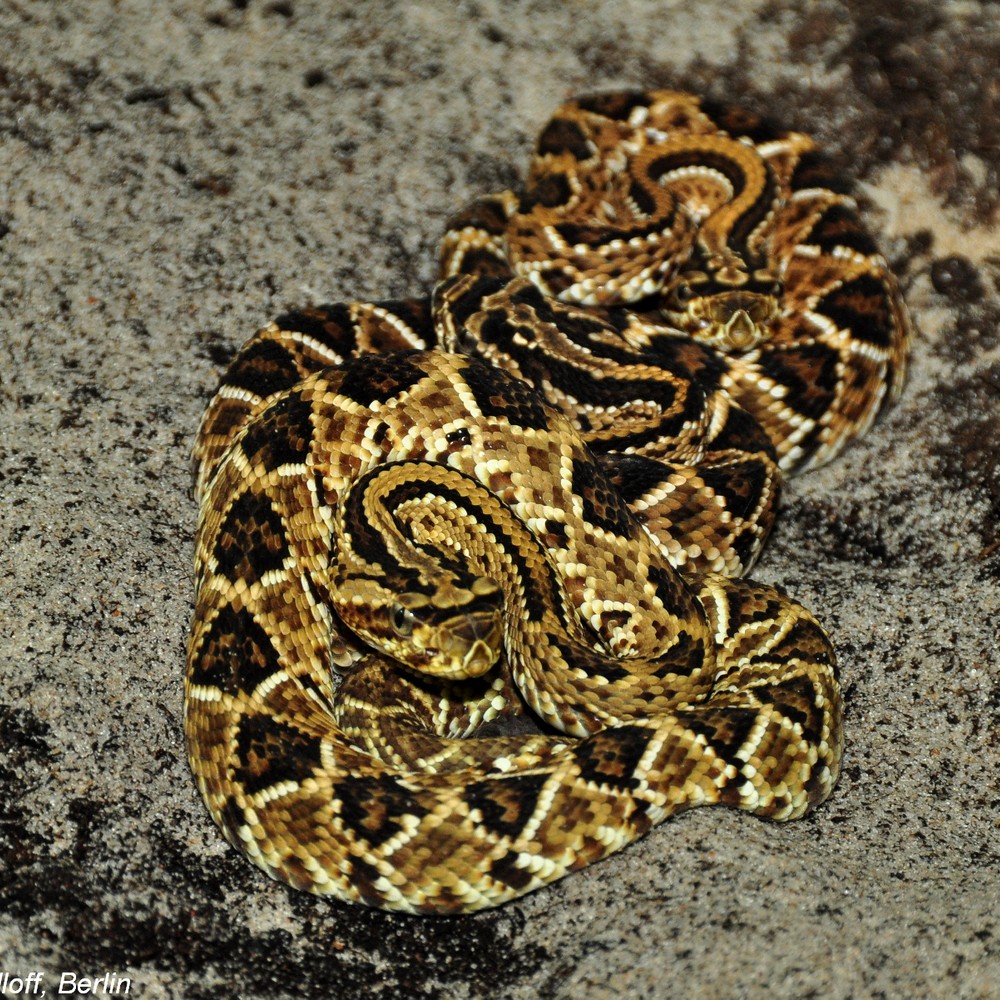Guiana rattlesnake
(Crotalus simus)

Description
Crotalus durissus is a highly venomous pit viper species found in South America. It is the most widely distributed member of its genus. Currently, seven subspecies are recognized. A large Neotropical rattlesnake, it grows to a length of 1.5 m (4.9 ft), and rarely to a maximum length of 1.9 m (6.2 ft).It has two distinct stripes starting at the base of the head. Within the lines, the color is lighter than the stripes. The color and pattern of the body are quite variable, most with an 18-32 dorsal with a darker diamond, and rhombic spots, 25-33 (usually 27) rows of dorsal scale in the middle of the body. The head has a dark brown bar at the top, with a dark post-orbital band. The color of the belly varies, it can be white or yellowish, with light gray spots, becoming darker towards the tail. The tail is usually gray, with dark and vague crossed bands. It prefers savanna and semi-arid zones. It has been reported to occur in littoral xerophilous scrub, psammophilous and halophilous littoral grassland, thorny xerophilous scrub, tropophilous deciduous and semideciduous scrub, as well as tropophilous semideciduous seasonal forest in the northwest of Venezuela. In the Chaco region of Paraguay, it is found in the drier, sandier areas. Crotalus durissus is found in South America except the Andes Mountains. However, its range is discontinuous, with many isolated populations in northern South America, including Colombia, Venezuela, Guyana, Suriname, French Guiana and northern Brazil. It occurs in Colombia and eastern Brazil to southeastern Peru, Bolivia, Paraguay, Uruguay, and northern Argentina (Catamarca, Córdoba, Corrientes, Chaco, Entre Rios, Formosa, La Pampa, La Rioja, Mendoza, Misiones, San Juan, San Luis, Santa Fe, Santiago del Estero and Tucumán). It also occurs on some islands in the Caribbean, including Aruba. The type locality given is "America."
Taxonomic tree:







